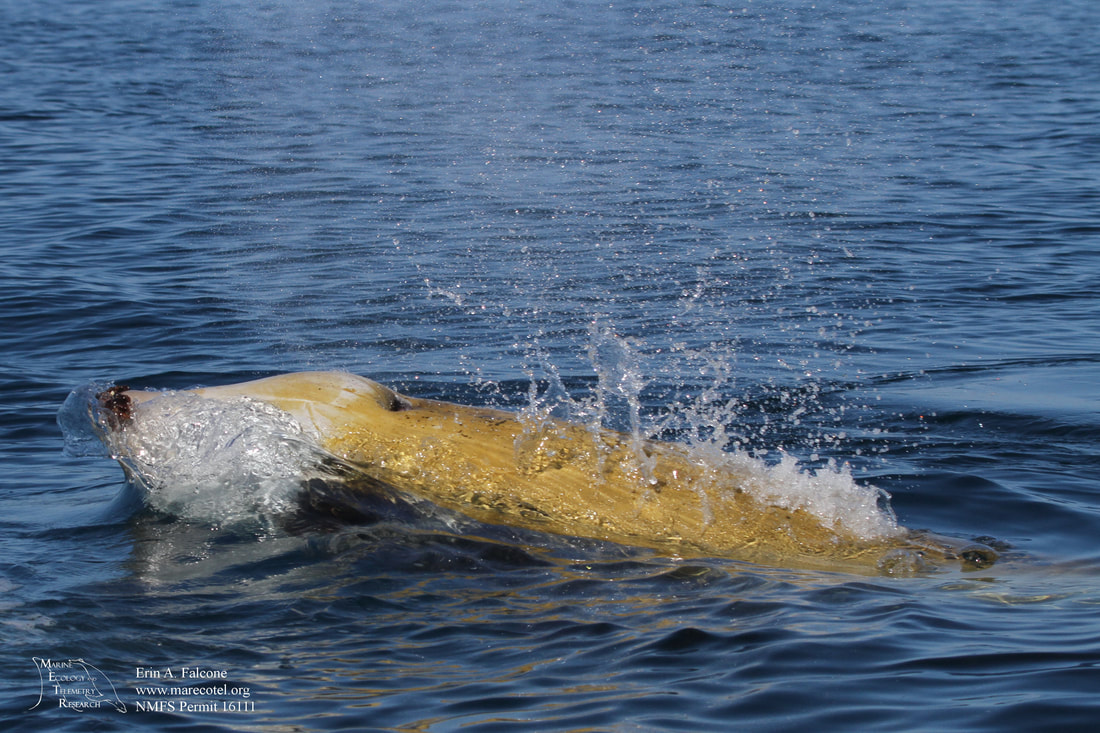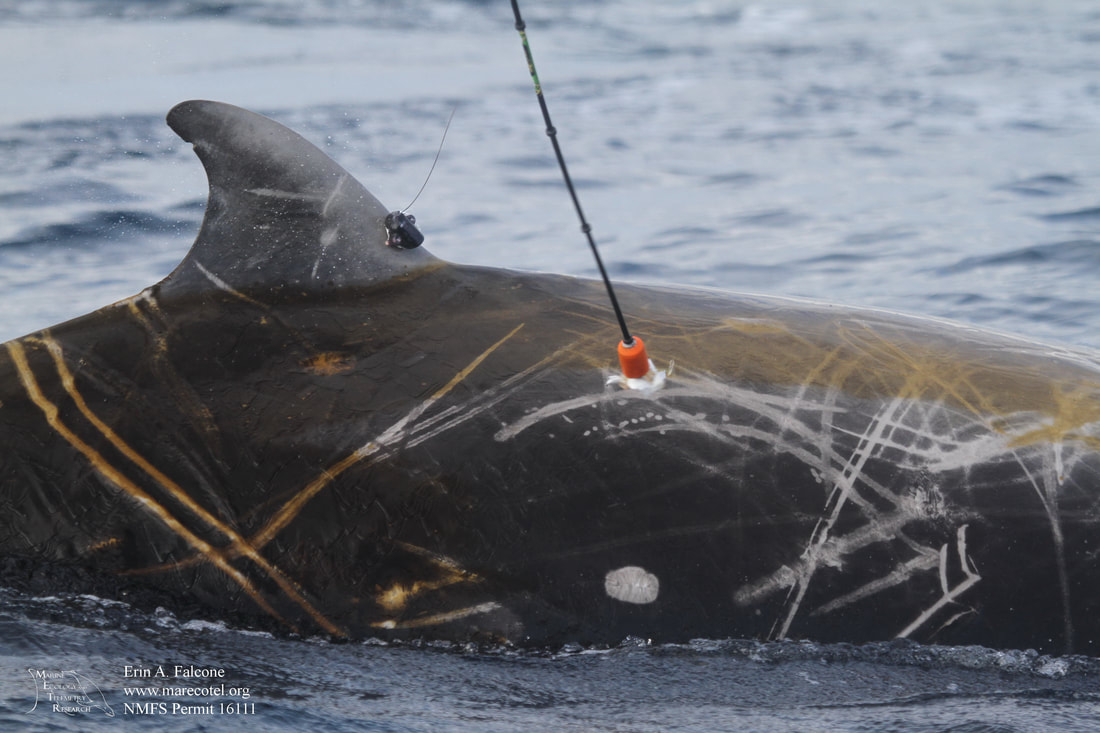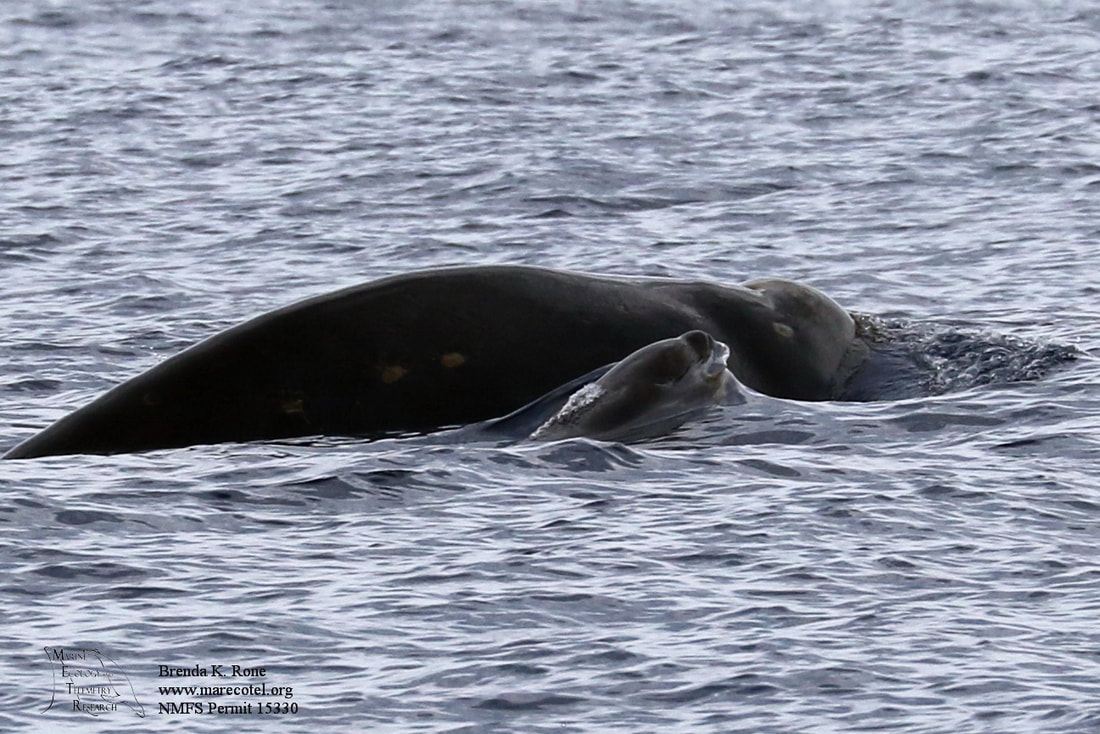new study finds whales react more strongly to sonar used by military helicopters than ships8/29/2017 Scientists from Marine Ecology and Telemetry Research (MarEcoTel) and a team of collaborators have just released the findings of a new study into how whales are affected by military sonar in the journal Royal Society Open Science. This study focused on Cuvier’s beaked whales that live off the coast of Southern California in an area the US Navy frequently uses for training exercises. This is the species most frequently observed to strand in association with sonar use in other parts of the world. Using small, dive-recording satellite transmitters attached to the whales’ fins, they monitored the behavior of 16 whales for periods up to several months, allowing a comparison between how whales behaved when military sonar systems were active and when not in use. This study provided the first large sample of whale behavior with known exposures to ship sonar, which have been studied previously, and to helicopter-deployed sonar that has received much less attention because it is considerably quieter than the sonar used by ships. It also allowed researchers to identify the range of distances to sonar that whales changed their behavior. A variety of behavioral changes were observed, including increased dive duration and an increase in the amount of time between the very deep dives these whales conduct when they are searching for food near the ocean floor. Some of these behavior changes were evident when sonar was used up to 100 km away, though they became more pronounced the closer the sonar was to the whale. One surprising finding was that whales tended to respond more strongly to the quieter helicopter-deployed sonar than to ship sonar at a similar distance. In fact, one whale dove for an astonishing 2 hours and 43 minutes, a new mammalian diving record, while a helicopter deployed its sonar nearby. The authors suggest that these whales may respond more strongly to helicopter-deployed sonar because it is used in a less predictable way. While none of these whales, who appear to preferentially use this region despite the regular disturbance, stranded or died as a result of sonar use during the course of the study, these findings underscore the importance of understanding what these responses mean for the health of both individuals and populations over time. They also suggest that in an area where whales are frequently exposed, the context of sonar is a potentially important predictor of behavior in addition to sound level, which is how sonar impacts are currently estimated. A copy of the paper can be downloaded here (Falcone et al. 2017), or by going to the Royal Society Open Science Website (Falcone et al. 2017). For more information, please contact Erin Falcone ([email protected]) or Greg Schorr ([email protected])  An adult male Cuvier's beaked whale surfaces to breath. Mature males in this species have two small, conical teeth that erupt from the tip of the lower jaw; this whale has stalked barnacles growing from his teeth. Males use their teeth to fight with one another, and older males, like this one, will become covered with long, linear scars as a result. The yellowish coloration on this whale is caused by a type of algae that grows on the whales' skin.
3 Comments
Leave a Reply. |
AuthorClick here to learn about our research staff. Archives
August 2022
Categories |
Proudly powered by Weebly



 RSS Feed
RSS Feed